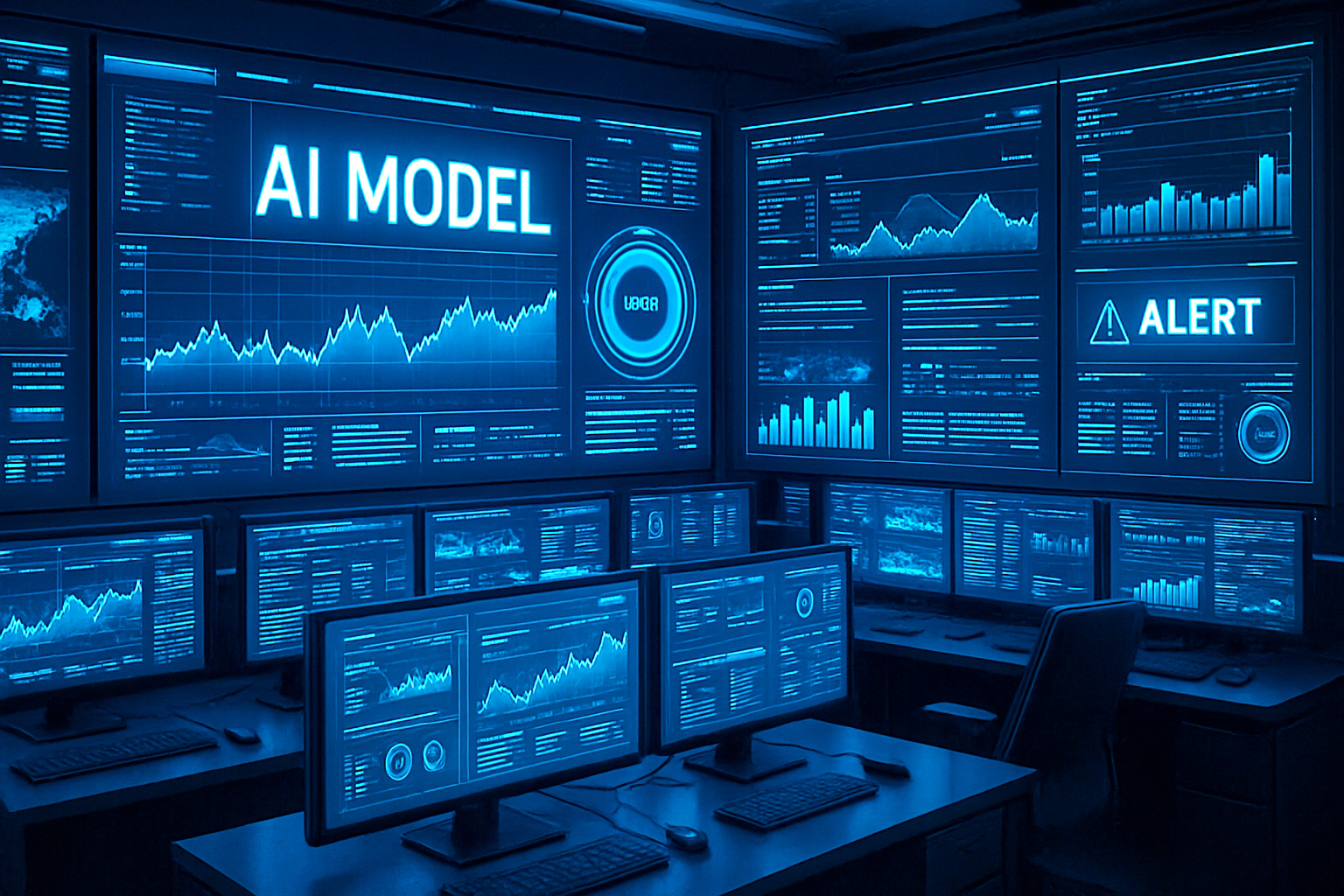August 13, 2025
Illuminating the Black Box Through AI Observability
Type
Deep DivesContributors
Eric Lee
As we’ve shared in prior posts, Cota Capital sees significant opportunity across the AI tooling landscape. Within this broader category, several subsectors stand out — and in this article, we’re zeroing in on one of the most important: model supervision and observability.
AI observability tools serve as the “eyes and ears” of machine learning systems in production —monitoring model behavior, data, and performance to keep AI reliable, fair, and secure. Their importance has grown rapidly with the rise of generative AI and LLMs, which bring new complexities and silent failure modes traditional monitoring can’t detect.
Unlike conventional software, AI models can quietly degrade and produce biased or inaccurate outputs without clear errors. Incidents like Instacart’s model drift, in which the performance of their item substitution and recommendation models deteriorated over time due to shifts in input data distributions, highlight the stakes. As the model’s predictions began to diverge from actual customer preferences and real-time inventory conditions, the system produced inaccurate substitutions and fulfillment errors at scale. These failures mirror early software outages that spurred the rise of application performance monitoring (APM). Now, the risk of undetected model issues — financial, reputational, or even safety-related — is too high, driving urgent demand for observability tools that detect problems like drift or bias early.
External pressure is also building. Regulations like the EU’s AI Act will require ongoing oversight and transparency. Enterprises are adopting Responsible AI frameworks to meet ethical and compliance standards, making continuous monitoring essential. As a result, AI observability is becoming a foundational layer of the modern AI stack, with startups and incumbents racing to meet the need.
The AI Monitoring Arms Race
AI failures often stem from shifting data, opaque models, and unpredictable usage patterns, and AI’s reliance on dynamic, sensitive data pipelines means quality issues quickly affect outcomes. Detecting them requires real-time observability. This has catalyzed the creation of purpose-built AI observability tools that address challenges across the stack, ranging from data quality and model drift to bias, explainability, and LLM-specific issues. Monitoring AI remains technically challenging, and most teams aren’t equipped.
These challenges are driving sharp demand for AI observability. We expect model monitoring and observability to rapidly expand within the $50B+ IT operations market. Traditional segments such as apps, logs, and networks are growing fast, and AI adds a new frontier. Gartner estimates ML observability could be twice the size of APM (~$4.5B) and grow twice as fast, implying a $9 – 10B market with 20%+ annual growth. As AI adoption accelerates, observability becomes essential to mitigate risk and build trust.
The field remains wide open. While cloud providers and incumbents like AWS, Google, Datadog, and Dynatrace expand into AI, Datadog’s backing of Arize AI underscores the urgency and complexity of this emerging space. Traditional observability tools were built for deterministic, rule-based software. In contrast, AI systems are probabilistic, data-dependent, and continuously evolving, requiring new approaches for monitoring data quality, model drift, bias, and performance degradation. This fundamental mismatch leaves room for AI-native platforms to lead. If history is a guide, this market will echo prior shifts — just as Datadog rose with cloud, AI complexity is spawning the next wave. As Arize’s founders say, they aim to bring “the same approach to AI models that Dynatrace brought to cloud software.” We believe AI observability will become core infrastructure, and today’s startups are best positioned to lead given their purpose-built technology, first-mover focus, speed of iteration, and deep domain expertise.
Despite dozens of post-2018 startups vying to lead, the AI observability sector is far from fully settled. AI observability is at most in its first generation. AI technology is evolving so quickly with generative AI, federated learning, and real-time reinforcement systems that entirely new needs (and thus new startups) will emerge. From a revenue perspective, it’s worth noting that enterprise adoption of AI observability is only beginning.
5 Wedges for Winning in AI Observability
Here are five areas where we see opportunity in AI model observability, each addressing a critical aspect of monitoring and governing AI systems:
1: Data Quality & Drift Management: Monitoring the data pipeline feeding the models
Since data fuels AI models, monitoring data quality in production is a core observability function. This includes detecting data and concept drift, as well as spotting missing or corrupt inputs. Even subtle upstream changes can degrade model performance, making early detection critical.
This area overlaps with the emerging data observability space, where startups like Monte Carlo and Acceldata originally focused on ETL pipeline health. Now, ML-specific tools offer drift detection, integrity checks, and schema monitoring. For example, WhyLabs flags real-time distribution shifts using statistical methods.
By catching bad or shifting data early, these tools prevent garbage-in/garbage-out scenarios — often serving as the first line of defense in AI observability.
2: Model Performance Monitoring & Drift Detection: Tracking how well models are performing over time
Performance monitoring is the core health check for AI models in production. These tools track prediction quality using metrics like accuracy, error rates, and precision/recall, and compare outputs to ground truth or proxy business metrics (e.g., conversion rates) to ensure models deliver real value. Critically, they detect model drift — performance drops due to changing data or behavior — and alert teams when metrics fall or output distributions shift.
Leading platforms, such as Arize and Fiddler, excel here. Arize offers pre- and post-deployment monitoring with granular segment analysis, while Fiddler combines real-time metrics with drift analysis. For startups, the opportunity lies in becoming the “mission control” for model performance, providing a unified view that flags issues early and builds deployment confidence.
3: Bias, Fairness & Compliance Monitoring: Ensuring AI models behave ethically and meet regulatory requirements.
As AI powers high-stakes decisions in hiring, lending, healthcare, and justice, monitoring for bias and fairness is critical. This involves tracking metrics like demographic parity and disparate impact to flag when models disadvantage certain groups. Tools in this space provide transparency for compliance and are increasingly embedded with bias dashboards and alerts.
Arthur AI, for instance, focuses on fairness monitoring and serves regulated industries. The drivers are both ethical and regulatory, as companies want to align AI with their values and avoid legal or reputational fallout. With rules like the EU AI Act requiring ongoing bias oversight, observability tools are becoming core to Responsible AI efforts. Startups specializing in this area can carve out a niche, particularly as GRC platforms seek to integrate AI oversight. Demand is rising for solutions that make fairness and compliance proactive, not reactive.
4: Explainability & Root-Cause Analysis: Peering inside the “black box” to understand why models do what they do
A key value of AI observability is explainability, or understanding why a model made a decision. While traditional monitoring flags what went wrong, explainability tools reveal the why, helping debug issues and build user trust. These tools highlight influential input features, track global behavior (e.g., SHAP values), and support traceability by showing which data and model version produced an output.
Explainability is especially important for regulated or high-stakes use cases like loan denials, where stakeholders expect clarity. Many observability platforms now include features like bias attribution and scenario analysis (“what-if” inputs). Fiddler, for example, started with explainability before expanding into full-stack observability.
These capabilities are essential for audits, compliance, and Responsible AI initiatives. As models grow more complex, startups that deliver advanced, real-time, and user-friendly explainability will be well-positioned to lead.
5: LLM and Generative AI Observability: Specialized monitoring for large language models and generative AI applications
The rapid rise of LLMs like GPT-4 has created new observability challenges. Unlike static models, LLMs generate dynamic, open-ended outputs (text, images, or code) based on ever-changing prompts. This requires specialized tools to monitor prompt inputs, output quality, and generative failure modes such as hallucinations, bias, or prompt injection attacks.
Startups are quickly emerging to address this. Gantry focuses on logging prompts, measuring latency and cost, and scoring responses. LangSmith (from LangChain) evaluates prompt chains, while OpenAI’s Tracer captures token usage and snapshots. Dynatrace has joined the effort, partnering on OpenLLMetry to embed LLM data into observability stacks.
LLM observability is poised to be a major sub-segment as enterprises accelerate generative AI rollouts. Key features include content safety monitoring, usage tracking, feedback scoring, and prompt optimization dashboards. Most IT teams lack visibility into LLM behavior, so purpose-built tools are in demand. These solutions will likely evolve into essential components of observability platforms — or become standout companies of their own — as LLMs become core enterprise infrastructure.
The Platform Playbook for AI Observability Startups
Rapid growth in AI observability suggests today’s point solutions are quickly evolving into full platforms. As in other software sectors, startups that begin with a narrow focus, like drift detection, are expanding into data monitoring, bias detection, and retraining workflows. Arize AI, for instance, now offers an end-to-end evaluation store and LLM tools; Fiddler has grown from explainability into full-stack monitoring. This shift is driven by demand for unified solutions as teams don’t want to juggle multiple tools.
Platform-based observability has a broader reach, serving diverse roles from risk and compliance to DevOps and data science. These systems integrate easily with existing infrastructure and enable continuous feedback loops — linking pre-deployment validation to real-time monitoring and retraining. That closed-loop capability adds major value and helps enterprises meet rising regulatory expectations.
As AI adoption surges, so does the need for robust, all-in-one observability platforms. We expect winners in this space to mirror past giants like Datadog — becoming foundational infrastructure. With clear ROI and growing trust needs, platform-oriented startups are well-positioned to lead. The opportunity is vast: build the trusted backbone of AI reliability and emerge as the next generation of enterprise software leaders.





